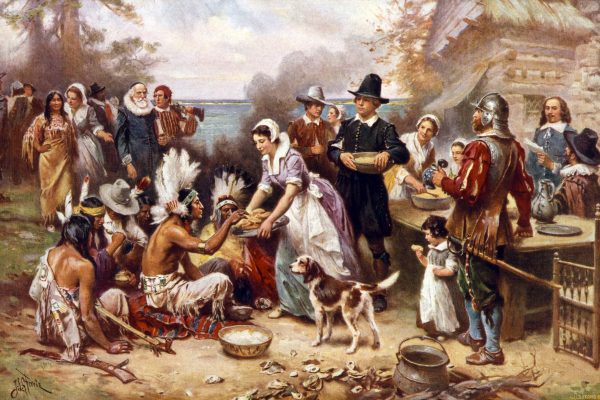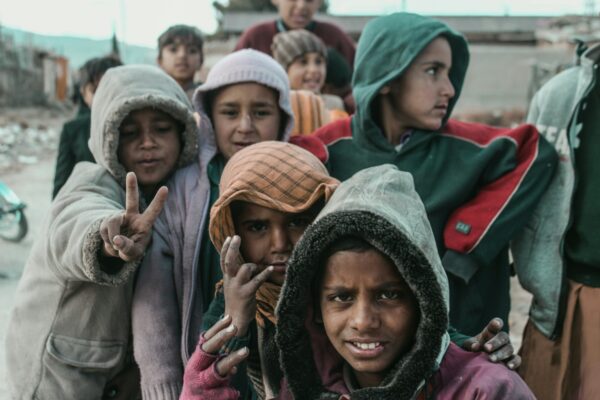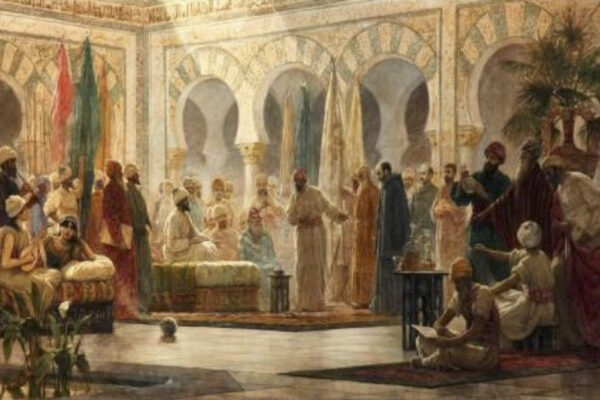A deep dive into the so-called “Arab Spring” and its history – and where this might lead us today.
A deep dive into the so-called “Arab Spring” and its history – and where this might lead us today.
The Arab Spring, a series of pro-democracy protests that began in 2010, transformed many Arab countries. Religion played a key role in these protests, helping to bring about change and unite people.
Protestors used religious stories and symbols to demand justice, freedom, and dignity, which resonated with the mostly Muslim populations. Religious leaders and institutions reacted differently: some supported the protestors, others opposed them, and some tried to mediate the conflicts.
After the protests, Islamist groups became important political players, shifting from opposition roles to government positions. This highlights the close connection between religion and politics in the Arab world and how religious beliefs can both help and complicate efforts for democratic change.
The Arab Spring was a transformative series of protests and uprisings that swept through several Arab countries in North Africa and the Middle East starting in late 2010.
The catalyst for this movement was the self-immolation of Mohamed Bouazizi, a Tunisian street vendor, in protest against police harassment and corruption. His desperate act ignited widespread demonstrations in Tunisia, leading to the eventual overthrow of President Zine El Abidine Ben Ali in January 2011.
The success in Tunisia inspired similar movements across the region, where populations, especially youth, mobilized against authoritarian regimes, demanding political reforms, economic opportunities, and an end to systemic corruption and repression.
The protests spread rapidly to countries like Egypt, Libya, Yemen, Syria, Bahrain, and others, each with its own unique socio-political context but united by shared grievances against autocratic rule and economic inequality.
In Egypt, mass protests centered in Tahrir Square led to the ousting of President Hosni Mubarak in February 2011 after nearly three decades in power. Libya saw a violent conflict following protests against Muammar Gaddafi’s regime, which ultimately led to international military intervention and Gaddafi’s death in October 2011. Yemen experienced prolonged unrest and eventually a civil war, while Bahrain faced a crackdown on protests by its government.
The outcomes of the Arab Spring varied widely. Tunisia is often regarded as the sole success story, managing a relatively peaceful transition to democratic governance. However, other countries faced significant challenges.
Syria descended into a brutal civil war that continues to this day, exacerbated by regional and international interventions. Libya struggled with instability and fragmentation after Gaddafi’s fall. Egypt, after a brief period of democratic experimentation, reverted to military rule under President Abdel Fattah el-Sisi.
The Arab Spring had profound implications for the region and beyond. It sparked debates about the feasibility and sustainability of democratic transitions in the Arab world, the role of external actors in domestic conflicts, and the resilience of authoritarian regimes. It also highlighted deep-seated socio-economic issues, including youth unemployment, poverty, and lack of political freedoms.
In summary, the Arab Spring was a watershed moment in modern history, reshaping political landscapes in the Middle East and prompting global discussions about democracy, governance, and the prospects for change in authoritarian regimes. Its legacy continues to be felt as countries grapple with the aftermath of these uprisings and strive for political stability and social justice.
The Reason behind the Arab Spring
The Arab Spring was driven by a complex interplay of political, economic, social, and demographic factors that converged to create widespread discontent and fuel mass protests across the Arab world. Some key reasons behind the Arab Spring include:
Authoritarian Rule and Political Repression: Many Arab countries were governed by entrenched authoritarian regimes that stifled political freedoms, suppressed dissent, and maintained power through coercion and patronage networks. Citizens, particularly youth, grew increasingly frustrated with the lack of political participation, civil liberties, and accountability.
Socio-economic Issues: High unemployment rates, especially among youth (a demographic bulge in many Arab countries), economic inequality, and lack of economic opportunities were significant grievances. Despite economic growth in some countries, benefits often failed to reach ordinary citizens, exacerbating frustrations over corruption and crony capitalism.
Widespread Corruption: Corruption permeated many levels of government and society, hindering economic development, exacerbating inequality, and eroding public trust in institutions. The stark contrast between the lavish lifestyles of elites and the daily struggles of ordinary citizens fueled resentment and protests.
Youth Activism and Demographic Shifts: A significant demographic shift characterized by a youthful population with access to global communication and social media platforms played a crucial role. Young people, often educated but facing bleak job prospects, used social media to organize and amplify their voices, mobilizing mass protests and challenging authoritarian regimes.
Inspiration from Global Movements: The success of pro-democracy movements in other regions, such as the fall of the Soviet Union, the Color Revolutions in Eastern Europe, and the overthrow of authoritarian regimes in Latin America, served as inspiration and provided a template for Arab activists seeking change.
Regional and International Dynamics: Regional conflicts, such as the Iraq War and the Israeli-Palestinian conflict, contributed to regional instability and shaped public opinion. International factors, including Western policies towards the Middle East, perceptions of double standards in foreign intervention, and global economic trends, also influenced the context in which the Arab Spring unfolded.
Trigger Events: Specific incidents, such as Mohamed Bouazizi’s self-immolation in Tunisia, served as catalysts that galvanized public anger and mobilized large-scale protests, sparking a chain reaction of demonstrations across the Arab world.
These factors combined to create a volatile environment where long-standing grievances boiled over into widespread protests demanding political reforms, economic opportunities, and an end to authoritarian rule.
The Arab Spring, therefore, was not a singular event but a culmination of deep-seated issues that had been brewing for years under the surface in many Arab countries.
How Did the Arab Spring Spread?
The Arab Spring spread across the Arab world primarily through a convergence of factors that amplified grievances and mobilized populations towards mass protests and uprisings. Here’s a detailed look at how it happened:
Social Media: Platforms like Facebook, Twitter, and YouTube played a pivotal role in organizing and mobilizing protesters. Activists used these platforms to disseminate information, share videos and images of protests, and coordinate actions. Social media provided a decentralized means of communication that allowed movements to quickly gain momentum and reach a broad audience, both domestically and internationally.
Traditional Media Coverage: Mainstream media outlets, both regional and international, extensively covered the protests and uprisings. This media attention helped to amplify the message of the protesters, increase awareness of their grievances, and garner international solidarity. Media coverage also put pressure on governments to respond to the demands of the protesters, as global scrutiny intensified.
Regional Solidarity: The success of protests in one country inspired and emboldened activists in neighboring countries. For example, the ousting of President Zine El Abidine Ben Ali in Tunisia in January 2011 served as a catalyst for similar movements in Egypt, Libya, Yemen, Syria, and elsewhere. The interconnectedness of the Arab world meant that events in one country had ripple effects across the region, igniting aspirations for political change and inspiring solidarity movements.
Cross-border Communication: Activists and organizations in different countries exchanged tactics, strategies, and moral support. This cross-border communication facilitated the sharing of lessons learned and enabled movements to adapt to local contexts while maintaining a unified narrative of demands for political reform, economic opportunities, and social justice.
Political and Economic Interests: Regional and international actors, including governments, political organizations, and NGOs, played significant roles in either supporting or opposing the protests. Some governments backed the uprisings in pursuit of geopolitical interests or ideological alignment, while others sought to suppress them to maintain stability and control. Economic factors, including global economic trends and local economic hardships, also influenced the grievances underlying the protests.
Symbolic Acts and Events: Certain symbolic acts, such as Mohamed Bouazizi’s self-immolation in Tunisia, became powerful triggers that galvanized public anger and mobilized mass protests. Similarly, key events like large-scale demonstrations or violent crackdowns by security forces often sparked solidarity protests in other countries, demonstrating the contagious nature of dissent and resistance movements.
In summary, the Arab Spring spread through a combination of digital connectivity, media visibility, regional dynamics, cross-border solidarity, geopolitical interests, economic grievances, and symbolic triggers. It underscored the interconnectedness of issues across the Arab world and highlighted the potential for collective action to challenge entrenched authoritarian regimes and demand political change.
The Role of Religions In The Arab Spring
Christians’ Roles in the Arab Spring
During the Arab Spring, Christians in countries like Egypt and Syria faced uncertain times and expressed worries about their future. They feared being marginalized or caught in sectarian tensions as political situations became unstable.
Some Christian leaders joined with Muslim protesters during the protests. They called for changes in government and better fairness in society. They worked together, showing unity across different faiths.
Christian groups in Egypt wanted changes in the government, but they were careful because they worried about Muslim groups gaining too much power.
In countries where Christians were a minority, the governments said they were protecting Christians from Muslim groups. They used this as a reason to stop protests and arrest people.
The situation of Christians got attention from other countries during the Arab Spring. This made countries think about how they would work with the countries in the Middle East. It also made groups that help people think about how to help Christians there.
Muslims’ Roles in the Arab Spring
Muslims played a central role in the Arab Spring across several dimensions:
Protest Leadership: Muslim activists and leaders were at the forefront of organizing and leading protests against authoritarian regimes. They mobilized fellow Muslims and other citizens to demand political reforms, social justice, and better living conditions.
Islamic Values: Islamic principles such as justice, equality, and accountability were often invoked during protests as moral justifications for challenging corrupt and oppressive regimes. Many protesters framed their demands within an Islamic framework, appealing to shared religious values.
Muslim Brotherhood and Islamist Movements: Islamist groups, particularly the Muslim Brotherhood and similar organizations, played significant roles in countries like Egypt and Tunisia. They leveraged their organizational capabilities and grassroots support to participate in and influence the outcomes of the uprisings.
Interfaith Cooperation: In some instances, Muslims collaborated with Christians and other religious groups in joint efforts for political change and societal reform. This interfaith solidarity was evident in shared protests and calls for democratic governance.
Political Transformation: The Arab Spring led to the rise of Islamist political parties in countries like Egypt, where the Muslim Brotherhood briefly held power. This represented a shift in political landscapes, reflecting the aspirations of many Muslims for greater representation and governance based on Islamic principles.
Government Responses: Governments in Muslim-majority countries often framed protests as threats to stability and Islamic values. They used religious rhetoric to discredit opposition movements and justify crackdowns on demonstrations, citing concerns over potential chaos or Western interference.
Regional Influence: The success of protests in one Muslim-majority country often inspired similar movements in neighboring states, highlighting the interconnectedness of Islamic societies in the region and their shared desires for political change.
Shia Muslims’ Roles in the Arab Spring
During the Arab Spring, Shia Muslims played important roles in several countries:
Bahrain
In Bahrain, where Shias are the majority, they protested against the Sunni monarchy. They wanted better treatment, more say in politics, and fairer opportunities. They demanded democratic changes to end discrimination.
Saudi Arabia and Eastern Province
Shia Muslims in Saudi Arabia’s Eastern Province, where they are a minority, joined protests. They sought fair treatment, more job chances, and a bigger role in how their country is run. They highlighted issues of discrimination and economic disparities.
Iraq
In Iraq, Shia Muslims were already active in politics after Saddam Hussein’s rule ended. While Iraq didn’t have big protests like other Arab countries during the Arab Spring, Shia groups kept working for better government and reforms.
Syria
In Syria, the Shia Alawite minority, led by President Assad, faced protests mainly from Sunni Muslims and others wanting political change. This led to a long civil war involving Shia militias and other groups, causing more tensions and instability.
The Arab Spring, a series of uprisings that began in late 2010 across the Middle East and North Africa (MENA) region, had profound and wide-ranging impacts on various aspects of society, politics, and economics:
Impact of Arab Spring
Political Transformation: The most immediate impact of the Arab Spring was the overthrow or significant challenge to long-standing authoritarian regimes in countries like Tunisia, Egypt, Libya, and Yemen. These uprisings were driven by demands for political reform, an end to corruption, and greater freedoms. While Tunisia successfully transitioned to a democratic system, other countries faced varying degrees of instability, civil conflict, or returned to authoritarian rule.
Social Mobilization and Empowerment: The Arab Spring demonstrated the power of grassroots movements and social media in mobilizing populations, particularly the youth. It empowered marginalized groups, including women and minorities, who played crucial roles in protests and advocacy for change. The uprisings sparked widespread debates on identity, citizenship, and the role of religion in governance, reshaping societal norms and expectations.
Economic Disruptions: The initial unrest caused significant economic disruptions in the region. Countries reliant on tourism and foreign investment saw declines in these sectors, leading to economic contraction and rising unemployment. The economic grievances that fueled the protests underscored deep-seated issues of inequality, lack of opportunity, and disparities in wealth distribution.
Regional Instability and Conflict: The aftermath of the Arab Spring resulted in varying degrees of instability across the region. Countries like Syria and Libya descended into protracted civil wars, exacerbating humanitarian crises and creating refugee flows that impacted neighboring countries and beyond. The regional power dynamics shifted, with implications for regional security and international relations.
International Response and Intervention: The international community responded to the Arab Spring with varying degrees of support or caution. Western countries initially embraced the uprisings as movements for democracy and human rights but faced challenges in balancing support for change with stability concerns. Regional powers and international actors became involved in conflicts, shaping outcomes and prolonging instability in some cases.
Legacy and Lessons Learned: The Arab Spring left a lasting legacy of both hope and disillusionment. While it demonstrated the aspirations of people for democratic governance and social justice, the challenges of political transition and state-building proved formidable. Authoritarian resurgence in some countries highlighted the limitations of external intervention and the complexities of fostering sustainable democratic change.
Conclusion
The Arab Spring stands as a transformative chapter in the history of the Middle East and North Africa, where aspirations for democracy, freedom, and social justice ignited widespread protests and political upheaval.
While it initially sparked hope for democratic reform and societal change, the aftermath revealed a complex reality of regional instability, economic challenges, and varying paths of political transition.
The uprisings underscored the power of grassroots movements and social media in mobilizing populations, reshaping societal norms, and empowering marginalized groups. However, the struggle to balance aspirations for democracy with the realities of governance, coupled with external interventions and authoritarian resurgences, highlighted the formidable challenges of sustainable political change.
The Arab Spring’s legacy continues to unfold, reminding us of both the potential and complexities inherent in movements for societal transformation.
References
- “The Arab Uprisings: What Everyone Needs to Know” by James L. Gelvin
- “The Arab Spring: Causes, Consequences, and Implications” by Fawaz A. Gerges (Middle East Policy Council Journal, 2011)
- “Understanding the Arab Uprisings” by Marc Lynch (Foreign Affairs, 2011)
- “The Arab Spring: A Year of Revolution” by Sarah Joseph (International Review of the Red Cross, 2012)
- BBC
- Al Jazeera
- The New York Times





